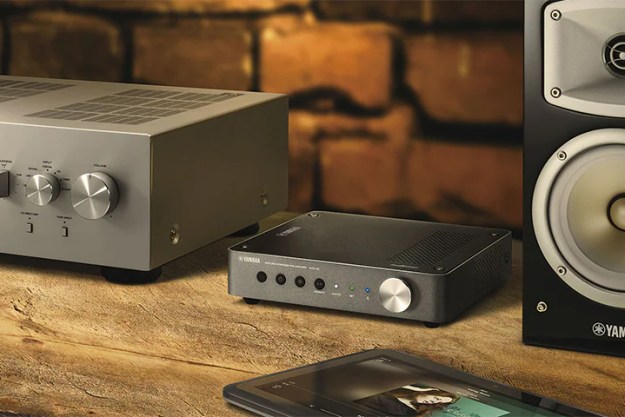
Mere days after launching a free, ad-supported version of its music streaming service, a new report suggests that Amazon has its sights set on a premium version of Amazon Music, which would offer better than CD quality streaming audio, for more discerning listeners. Music Business Worldwide cites “high-placed music industry sources,” who claim the new, high-quality tier will launch before the end of 2019 and likely cost in the vicinity of $15 per month.
“It’s a better bit rate, better than CD quality,” one source told the website. “Amazon is working on it as we speak: They’re currently scoping out how much catalog they can get from everyone and how they’ll ingest it.” The move, if true, is a bold step for Amazon which has lagged behind both Spotify and Apple Music in the U.S. By offering both a free tier and a premium tier, the company could rapidly add customers through the ad-supported model, while simultaneously offering them an appealing upgrade path, should their needs (and budget) evolve.
A higher than CD-quality level of service would be largely wasted on anyone who listens to music on a device like Amazon’s Echo family of smart speakers, but the home audio market is changing rapidly, and having an available hi-fi tier would make Amazon’s music subscription service an easy choice for those with high-end gear. Denon’s line of HEOS wireless audio products have been hi-res audio compatible for several years, and the same is true of Sony, Bluesound, Yamaha, Riva, and most recently, Bowers and Wilkins Formation Suite of wireless home speakers. In fact, just about the only home hi-fi company that hasn’t stepped up to support lossless 24-bit/96-192 kHz audio is Sonos.
Alongside the home audio move to support hi-res, the smartphone and wireless headphone market is also moving in the same direction. Increasingly, smartphones are shipping with 24-bit or better digital-to-analog converters (DACs), and when they’re paired over Bluetooth using AptX HD to a good set of wireless headphones, it creates a system that is more than capable of letting music fans hear the difference a hi-res, lossless track can deliver.
If this new tier launched tomorrow, Amazon would have very little competition. Currently, only Tidal, Deezer, and the little-known Qobuz offer hi-res streaming audio, but they’re not exactly cheap. Quobuz charges $25 per month to access its collection of lossless hi-res FLAC tracks, and Tidal’s hi-fi subscription level, which gives you access to its MQA-based Masters collection, runs $20 per month. Deezer’s hi-fi offering costs the same. Amazon, with its massive brand recognition and presumably heavyweight negotiation leverage with music labels, could easily trounce these other services by coming in at less than $20 per month — which it reportedly plans to do.
The only remaining question, if Amazon does launch this new service, is how will Spotify, Apple, and Google respond? None of these big three companies have taken the plunge into hi-res subscription tiers, but they may have to if Amazon jumps in.
Editors' Recommendations
- Amazon Music follows Spotify’s lead with Maestro, an AI-based playlist creator
- What is spatial audio? The 3D sound experience fully explained
- What is Amazon Music: everything you need to know
- What is Deezer? Features, pricing, and music quality explained
- What is Apple Music? Music, pricing, and features explained




